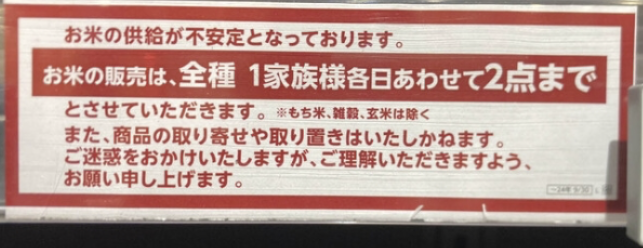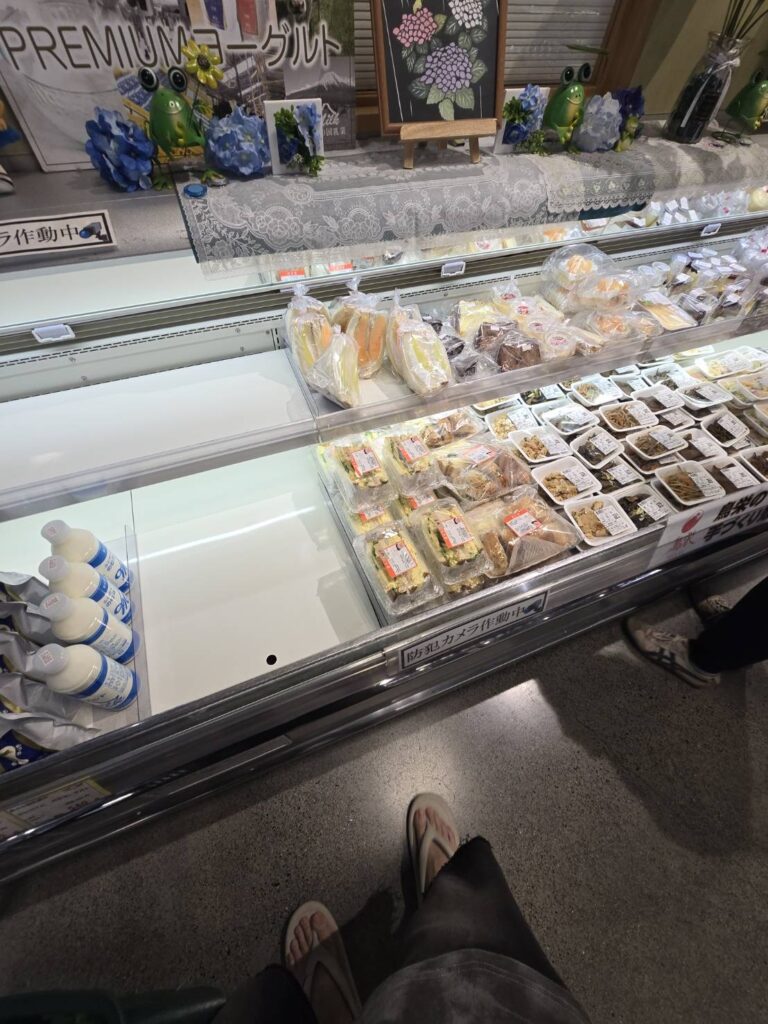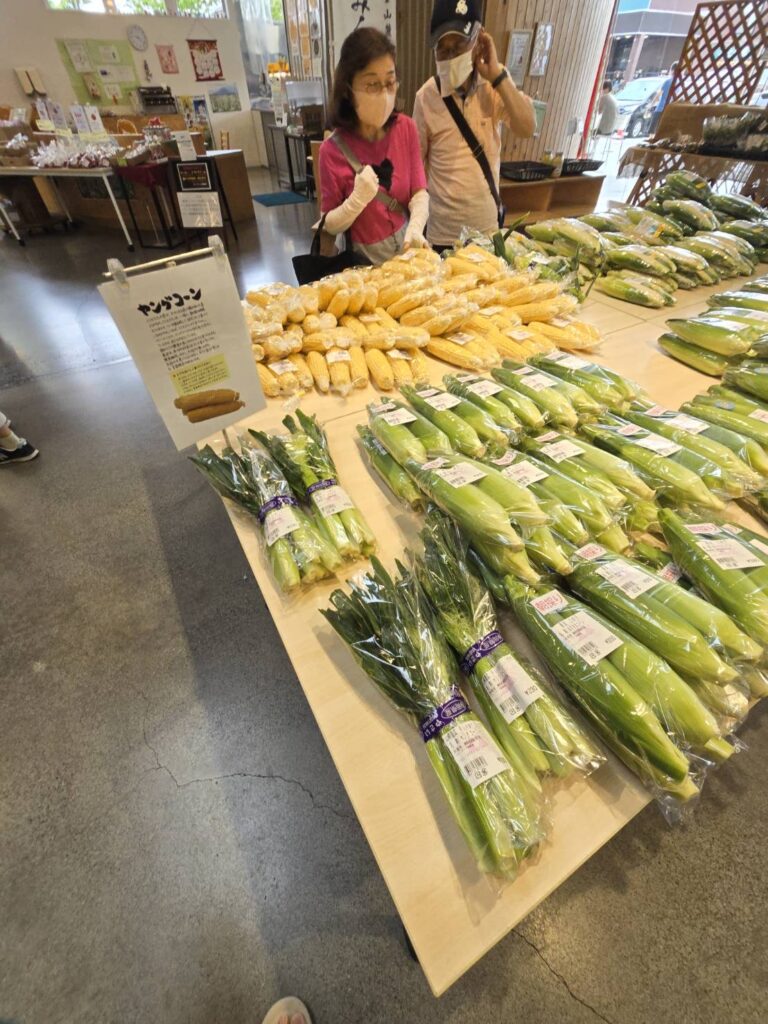
“You can only buy two bags per household per day due to rice supply insecurity.”
A restriction notice announcing the restriction on the purchase of rice has been posted at a supermarket in Shinjuku, Tokyo on Sunday. The shelves were already empty. Such a situation is taking place not only in Tokyo but also across Japan. Recently, posts such as “I’ve been to a supermarket near my workplace, and they are selling only glutinous rice,” and “Brown rice is disappearing,” are easily spotted in Japan through social media X. Korean online communities in Japan also post messages such as “Even expensive (brand) rice is empty,” and “I can only sigh when I will be able to buy rice.” Japanese media also report that “Rice has disappeared from the shelves of supermarkets” and “If you search for related words related to the word ‘rice’ on Google for the past month, the number of search terms such as ‘lack of rice’ and ‘lack of rice’ has been on the rise since August.”

Due to the recent shortage of rice supply in Japan, it is difficult to obtain a small rice bag from ordinary households. According to the basic rice guidelines released by Japan’s Food Subcommittee of the Ministry of Agriculture, Forestry and Fisheries on Friday, rice stocks for private consumption reached an all-time low of 1.56 million tons as of the end of June, 410,000 tons less than the same period last year.
On the 26th, Osaka Prefecture Governor Hirofumi Yoshimura demanded that the government release its stockpile of rice, saying, “As a result of our own emergency investigation, about 80% of retail stores were out of stock.” Governor Yoshimura criticized, “I received a call from the government, ‘There is no plan to release the stockpile rice because supply and demand conditions are not urgent nationwide,’ but (in reality, due to the shortage problem), the price of rice is rising,” adding, “Will we leave the government’s stockpile in a warehouse?”
The sudden shortage of rice in Japan is largely due to the sluggish rice production caused by last summer’s heat wave, which led to a decrease in distribution volume. “August, before the full-fledged arrival of the glutinous rice, was originally the lowest time for rice stocks, and various factors overlapped, such as delayed logistics due to the movement of hoarding in preparation for earthquakes and typhoons, and the Obong holiday (which corresponds to Chuseok in Korea),” Tetsu Sakamoto, the Minister of Agriculture, Forestry and Fisheries, said at a press conference after a ministerial meeting on the 27th.
Some point out that the Japanese government failed to accurately predict and respond to the demand for rice. “The government’s rice measures are still insufficient amid the growing risk of climate change,” the Nihon Keizai Shimbun said on the 28th. “As only 14.7 percent of the rice cultivation area nationwide (which can cope with climate change) is high-temperature resistant varieties, the Ministry of Agriculture, Forestry and Fisheries should speed up its countermeasures.”

In addition, there is an opinion that the fact that some media excessively reported the current situation as a “rice chaos” and that ordinary citizens have been spreading rumors such as “cannot buy rice” through social media has fueled this situation.
Some say that this is due to the unexpected increase in rice consumption due to the sharp increase in tourists due to the unprecedented weak yen, but this argument is not convincing. According to the Japanese government’s tourism bureau, the number of foreigners who visited Japan for a year from July 2023 was 32.13 million, up 2.3 times from the previous year (10.44 million). However, even assuming that tourists eat two meals of rice a day, rice consumption only increases by 20,000 tons per year, which does not affect the overall demand for rice.
Prime Minister Fumio Kishida ordered related ministries to “make efforts for smooth distribution in response to concerns over a shortage of rice distribution.” The Japanese government is urging consumers to refrain from hoarding, believing that the launch of new rice will resolve the supply shortage. On the same day, Sakamoto, the Minister of Agriculture, Forestry and Fisheries, said, “The growth of new rice is smooth this year, so the shipment is expected to be accelerated, with some harvesting a week earlier than usual.” “Since the shortage is expected to be resolved sequentially, consumers should respond calmly by purchasing only the amount of rice they need.”
The Japanese government said there is no current plan because the release of stockpiled rice could affect rice supply and demand and prices. “The overall rice supply and demand is not urgent, and sufficient inventory is secured,” said Chief Cabinet Secretary Hayashi Yoshimasa, a Japanese government spokesman. “The government is taking careful measures after grasping the shipment and inventory status.” In fact, shipments of newly harvested rice have begun since mid-month in Shiga Prefecture, which is called the “home of rice” in the Kansai region.
SOPHIA KIM
US ASIA JOURNAL



